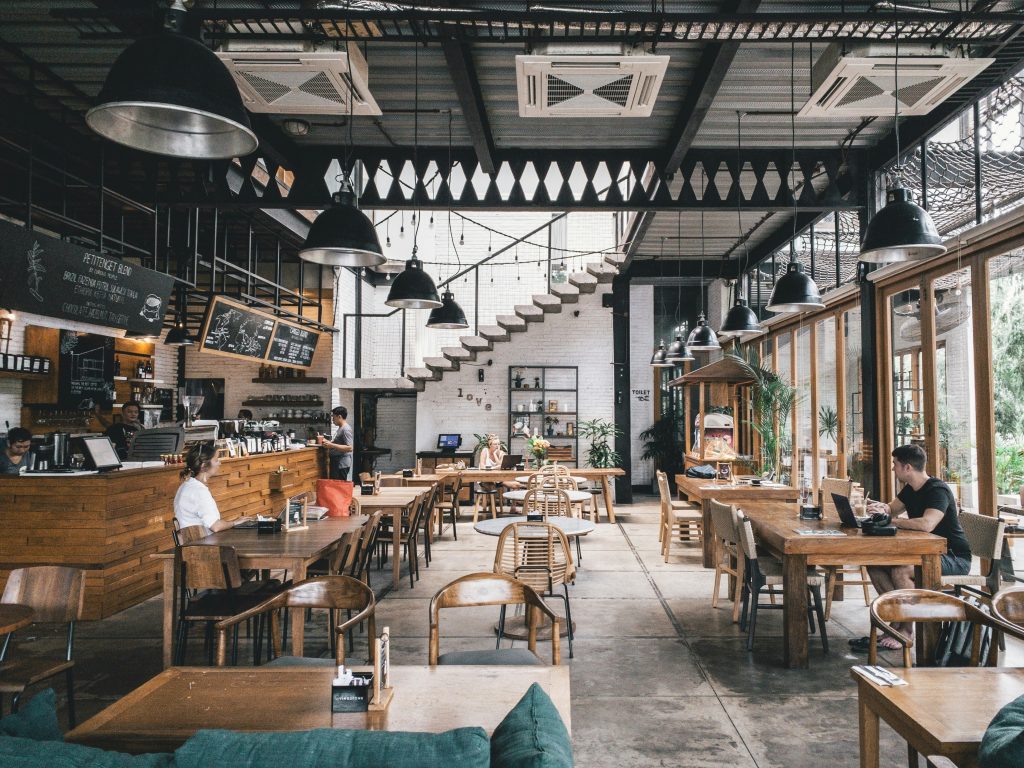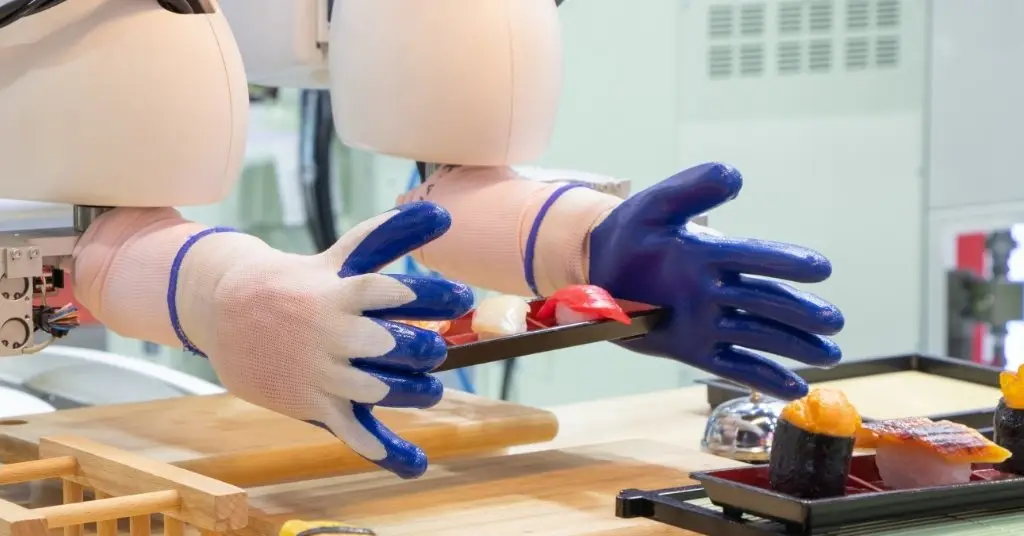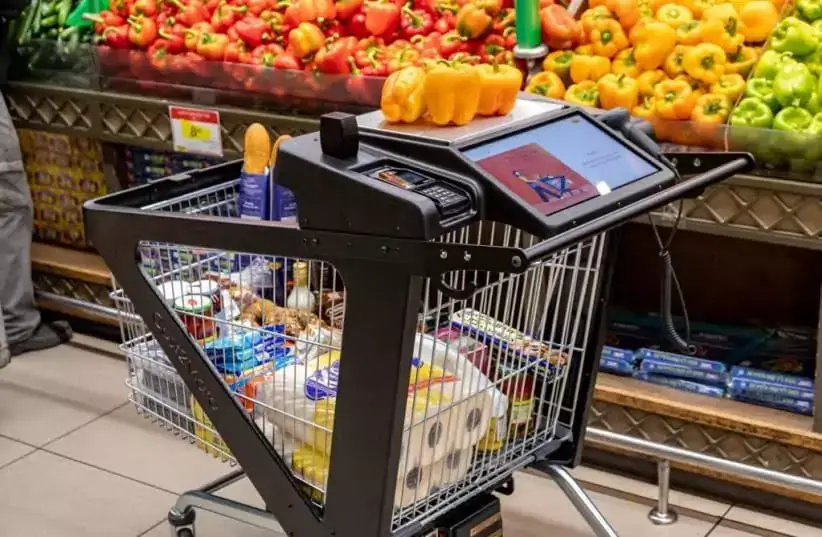Introduction
The restaurant industry in the U.S. is undergoing an AI-fueled makeover. From robot fry stations to predictive scheduling, automation is no longer a futuristic vision—it’s already reshaping kitchens and dining rooms. According to a Popmenu survey, 79% of U.S. restaurant operators have implemented or are considering AI solutions across operations from ordering to marketing. Moreover, 73% of execs plan to increase AI investments next year. Let’s dive into how this tech is painting the present day in vibrant, reality-based detail.

1. Flippy & Friends: Kitchen Robots Taking the Heat
Miso Robotics’ Flippy, a robotic fry station, has seen wide rollout across chains like White Castle, Jack in the Box, and Dodger Stadium; it’s now being deployed nationally with the help of a new maintenance partnership with Roboworx.
CaliExpress by Flippy, opened in late 2023 in Pasadena, features a fully automated kitchen preparing burgers, fries, and cheeseburgers—customers watch robotic arms cook in real time, while ordering and payment are handled by biometric technology via PopID.
The benefits? Greater consistency, reduced injuries in hot kitchens, and potential labor savings—all while enhancing guest perception of modern, clean dining.
2. AI at the Drive‑Thru & Ordering Front
Wendy’s FreshAI, powered by Google Cloud, now takes orders via voice AI at drive-thrus in pilot locations—showing promise for increased speed and accuracy vs. traditional systems.
Taco Bell and KFC deploy in-store AI coach tools like “Byte by Yum,” which support scheduling, inventory, and ordering insights without replacing employees.
At Dominos, voice-AI assistants handle 80% of North American phone orders, reducing workload on human staff and improving efficiency Restaurant Technology News.
3. Smart Scheduling, Staffing & Inventory
AI systems like Riley at KFC, Taco Bell, and Dairy Queen evaluate audio/video data to reward staff who upsell more—improving frontline performance incentives.
Predictive scheduling tools now help managers avoid over‑ or under-staffing by analyzing historical order patterns and local events.
Chains including McDonald’s, Juici Patties, Chipotle, and Yum Brands use AI to forecast demand, optimize inventory, and reduce food waste by up to 30–50%, and cut labor costs by 10–20%.
4. Personalized Upselling & Smart Menus
AI recommendation engines suggest add-ons, dessert pairings, and upsell offers in apps and kiosks, boosting order size by 10–15% or more.
Smart menu tools analyze sales trends to optimize layout, feature high‑margin items, and even adjust pricing based on time of day or demand—enhancing profitability and guest satisfaction.
5. Beyond the Kitchen: AI‑Enabled Delivery & Support
White Castle collaborated with Coco Robotics and Uber Eats to offer autonomous delivery robots in Chicago and beyond, proving reliability in real-world terrain—completed thousands of robotic deliveries.
Appetronix and Roboworx are rolling out staffed-cooking robots in stadiums and airports, capable of operating 24/7 with built-in quality assurance systems.
6. Industry Adoption & Trends
A Deloitte–sponsored study shows over 80% of restaurant leaders expect more AI use in the upcoming fiscal year, with early pilots converting into business-critical tools.
Major chains like McDonald’s are implementing AI at scale across 43,000 locations, using voice verification, computer vision, and equipment monitoring powered by edge computing.
Real-World Impacts
| Area | Real Outcomes / Example |
|---|---|
| Kitchen | Flippy reduces layout disruption; cooks at stadiums & chains |
| Drive‑thru / Orders | Wendy’s, Domino’s & Taco Bell use voice AI; improves throughput |
| Inventory / Waste | AI forecasting cuts waste by 30–50%; labor costs down 10–20% |
| Upselling | Smart menus lift average ticket by 10–30% |
Looking Ahead: Challenges & Opportunities
 What Works:
What Works:
AI is delivering consistent food quality and improving staff safety.
Automation enables small teams to serve higher volumes, boosting margins.
Customer experience improves via ordering perks, fewer errors, and faster service.
 What to Watch:
What to Watch:
Initial costs and integration complexity can be high for independent owners.
Public concerns over AI accuracy and reduced human interaction still exist in some demographics (e.g. Wendy’s voice AI pilots).
Long-term success relies on maintenance partners like Roboworx to keep robots reliable.
Final Thoughts
AI and automation are no longer sci-fi—they’re reshaping the everyday realities of restaurant operations across the U.S. From robotic fry stations and voice AI drive-thrus to predictive forecasting and smart upselling, AI solutions are bringing measurable ROI and operational lift. And while indie restaurants may start small, automation is proving feasible even beyond large chains.
If you’re a restaurant operator looking to stay competitive, now is the moment to explore AI—not as a gimmick, but as a partner in consistency, efficiency, and customer loyalty. Let me know if you’d like help formatting this as a blog post, case-study document, or presentation!







